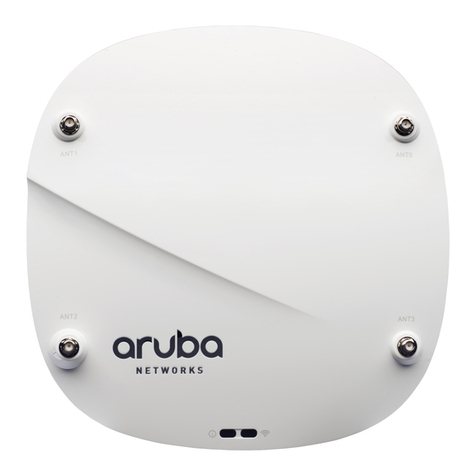
Wiring the Redundant Power Inputs
The top two pairs of contacts of the 10-contact terminal block connector
on the Wireless Access Point/Bridge/Client´s top panel are used for the
two DC inputs. Top and front views of the terminal block connector are
shown here.
STEP 1: Insert the negative/positive
wires into the V-/V+ terminals.
STEP 2: To keep the DC wires from
pulling loose, use a small flat-blade
screwdriver to tighten the wire-clamp
screws on the front of the
connector.
STEP 3
: Insert the plastic terminal block
connector prongs into the terminal
block receptor, which is located on
Wireless Access Point/Bridge/Client´s
NOTE Input Terminal Block is suitable for wire size range of 12-
0.0804 mm²) and a torque value of 4.5 lb
ATTENTION
If the Wireless Access Point/Bridge/Client is connected to a
motor or other similar type of equipment, be sure to use
power isolation protection before connecting the Wireless
Bridge/Client to the DC power inputs, make
Wiring the Relay Contact
The Wireless Access Point/Bridge/Client has one relay output, which
consists of the two contacts of the terminal block on the device’s top
panel. Refer to the previous section for detailed instructions on how to
connect the wires to the terminal block connector, and how to attach the
terminal block connector to the terminal block receptor. These relay
contacts are used to indicate user-configured events. The two wires
attached to the Relay contacts form an open circuit when a
user-configured event is triggered. If a user-configured event does not
occur, the Relay circuit will be closed.
Wiring the Digital Inputs
The Wireless Access Point/Bridge/Client has two sets of digital inputs -
DI1 and DI2. Each DI comprises two contacts of the 10-pin terminal block
connector on the device’s top panel. Refer to the “Wiring the Redundant
Power Inputs” section for detailed instructions on how to connect the
wires to the terminal block connector, and how to attach the terminal
block connector to the terminal block receptor.




























